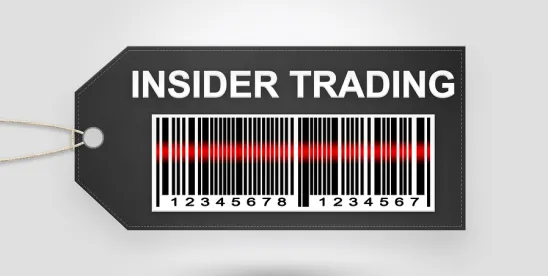On January 13th, the US House of Representatives overwhelmingly voted to pass legislation designed to prevent public company insiders from trading on corporate information ahead of the investing public during the period between the filing of a Form 8-K and the event triggering the filing (the “8-K gap period”). The US Senate version of the 8-K Trading Gap Act of 2019 (the “Bill”) was introduced on January 17th and awaits consideration. If passed, the Bill would amend the Securities Exchange Act of 1934 to direct the Securities and Exchange Commission to issue rules requiring public companies to establish policies reasonably designed to prevent trading by officers and directors during the 8-K gap period, subject to certain exceptions. This gap period generally would begin on the date of either the event triggering the Form 8-K filing or the date when a decision is made to provide voluntary disclosure in a Form 8-K, and would end on the date when the 8-K is filed. Form 8-K permits a gap of up to four business days before the 8-K is required to be filed. In its present form, the Bill provides that companies with non-compliant insider trading policies and practices could be subject to federal enforcement actions.
The Bill would codify the current practice of prohibiting insider trading through the use of company insider trading policies and pre-clearance procedures and impose standards on those policies. As currently written, the Bill would also extend insider trading prohibitions to all events triggering an 8-K report, regardless of the level of materiality of such information or whether it is likely to impact stock price (e.g., amendments to a company’s code of ethics, changes in a company’s accountants and new executive compensation arrangements). Securities transactions that occur automatically or that are made pursuant to an advance election (made outside of an 8-K gap period and when the insider was otherwise not in possession of material non-public information), such as those pursuant to Rule 10b5-1 trading plans, would be exempt under the proposed legislation.
The legislation was introduced in the House to eliminate the seeming advantage that insiders with non-public information have over the investing public during the 8-K gap period. While current law prohibiting insider trading by executive officers and directors on the basis of material non-public information and the prevalence of company insider trading policies might suggest that this additional protection is unnecessary, a 2015 academic study[1]of more than 15,000 Form 8-Ks suggests otherwise. The 2015 study, relied on by the sponsors of the House version of the Bill, revealed that insider trading during 8-K gap periods was not uncommon and resulted in systematically higher returns than those of non-insiders during the same periods, regardless of the nature of the 8-K disclosure. The study also showed that insiders engaging in open market purchases during 8-K gap periods were correct about the directional impact of the 8-K filing more often than not, and that insiders were more likely to engage in open market purchases of their own company’s stock when the company was about to reveal new agreements with customers and suppliers. These results suggest that problematic purchases and sales of public company securities are not being caught by currently employed safeguards. Whether or not insiders are using non-public information to beat the market during the 8-K gap, these trades create the impression that insiders are taking unfair advantage of their privileged access to company information.
As a matter of good governance and in light of the Bill’s substantial bipartisan support, public companies should consider whether their current policies and procedures are adequate to protect against the potential reputational risk of insider trades during the 8-K gap period. Specifically, companies may want to examine their insider trading polices and pre-clearance processes to determine whether:
-
prohibitions against trading on material non-public information, including market purchases of company shares, are being communicated to executive officers and directors in an effective manner;
-
effective procedures are in place to keep the company’s pre-clearance officer apprised of significant corporate events that should be considered when responding to inquiries from insiders in advance of securities transactions;
-
lengths of blackout periods are adequate; and
-
blackout periods should be extended to all 8-K triggers to reduce the appearance of any unfair advantage on the part of insiders.
Assuming the Bill becomes law, the Securities and Exchange Commission will have one year to implement rules requiring reporting companies to adopt policies “reasonably designed” to prevent trades by insiders in the specified circumstances during the 8-K trading gap. Companies will need to be prepared to adjust their policies and procedures to comply with such rules to avoid potential liability.
[1] Cohen, Jackson and Mitts, “The 8-K Trading Gap,” Columbia Law and Economics Working Paper No. 534.




 />i
/>i

